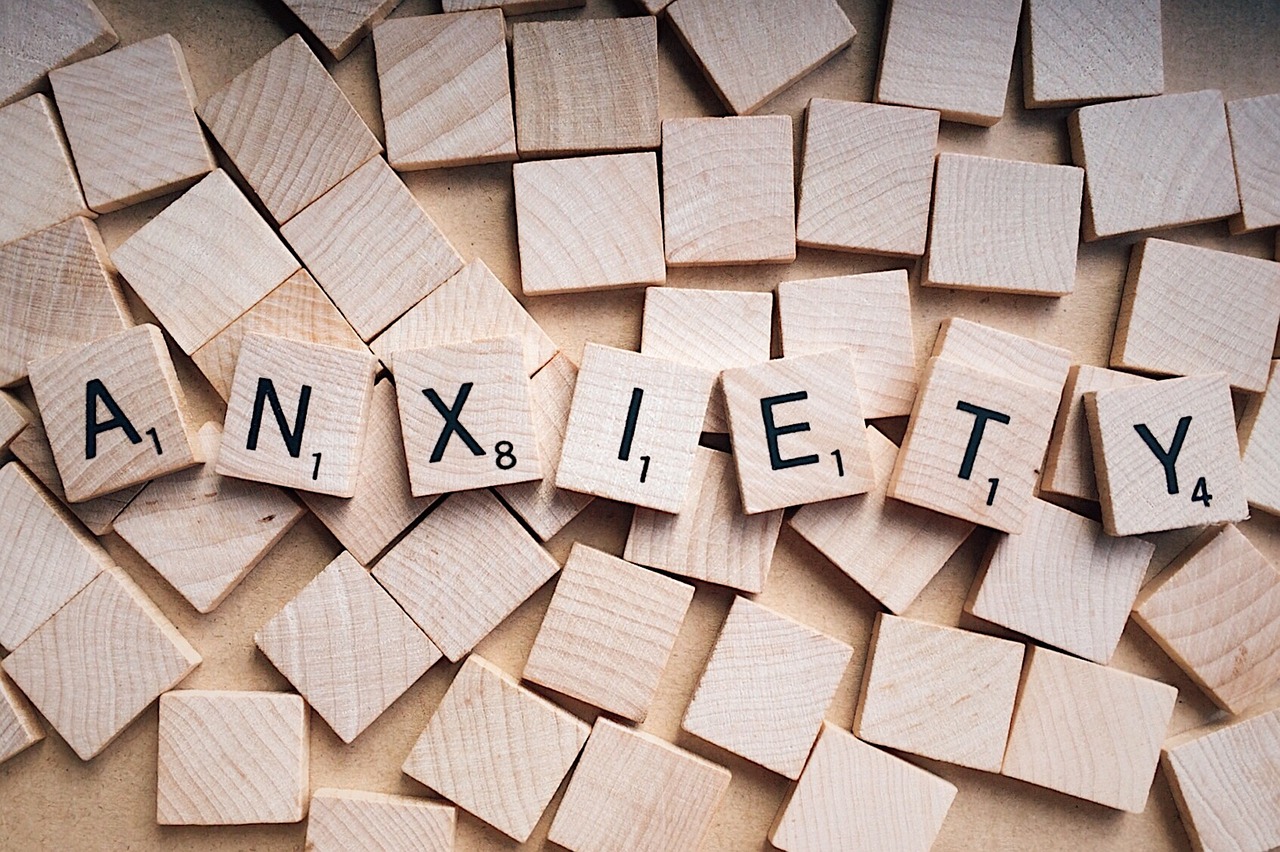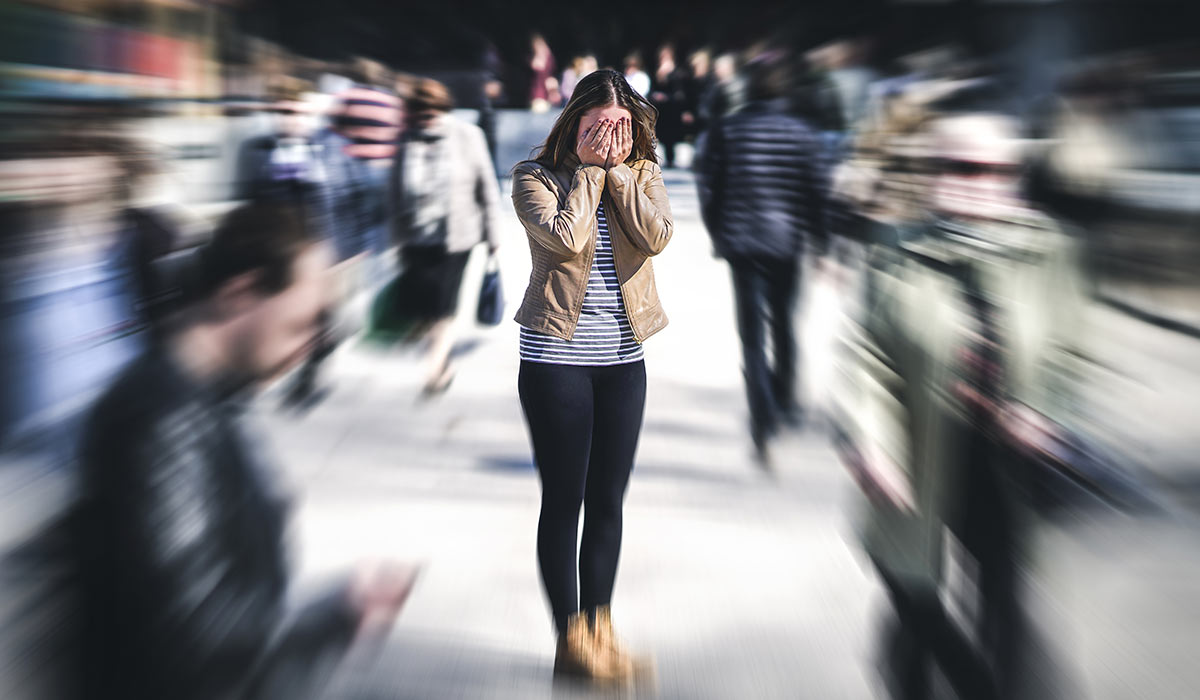Nausea, unwanted thoughts, heart palpitations, and fear are some symptoms of anxiety. According to the Anxiety and Depression Association of America (ADAA), anxiety is one of the most prevalent mental illnesses and affects 18.1% of the population. Anxiety can be triggered by a social encounter, making a decision, or when faced with a difficult situation. Although occasional anxiety is normal, excess anxiety can interfere with daily life and affect relationships. The National Institute of Mental Health (NIMH) states that there are several types of anxiety disorders, but here are six: 
- Generalized Anxiety Disorder (GAD)
According to WebMD, GAD consists of extreme fear and worry triggered by everyday events with no reason or cause. Furthermore, WebMD indicates people with GAD may worry about disasters, unrealistic situations, health, money, and relationships. Consequently, GAD can affect daily functioning and normal relations if untreated. The NIMH states GAD can cause overactive thoughts, irritability, insomnia, headaches, and palpitations. Although the cause of GAD is unknown, researchers have found that genetics, brain chemistry, and environmental factors may play a role, as stated by WebMD. Various treatment plans can be used alone or in combination to treat GAD, according to ADAA. Researchers have found that antidepressants, cognitive behavioral therapy, exercise, and yoga have been successful in decreasing symptoms of GAD.
- Obsessive-Compulsive Disorder (OCD)
OCD is an anxiety disorder that involves recurring thoughts (obsessions) and behaviors (compulsions), as indicated by the NIMH. Many people with OCD have rituals or obsessive behaviors that can affect their daily activities. Some examples of everyday rituals include opening and closing doors for a particular amount of time, obsessively counting, folding toilet paper in a specific manner, and turning on and off faucets multiple times. According to the NIMH, these behaviors are typically uncontrolled and usually take about one hour per day. The behavioral rituals are known only to ease anxiety and distress momentarily, the NIMH notes. The NIMH also indicates that the direct cause of OCD is unknown; however, genetics, brain chemistry, and the environment can increase the risk of developing the disorder. According to the NIMH, there are various treatment methods used to decrease OCD symptoms, including medication, psychotherapy, and transcranial magnetic stimulation.

- Specific Phobia
Intense fear or anxiety surrounding objects or situations is classified as an anxiety condition called specific phobia, as explained by the NIMH. These fears can be toward heights, animals, insects, germs, or flying, among others. Phobias can limit someone and make them avoid certain situations at all costs. According to WebMD, researchers are unsure of what directly causes phobias; however, scientists understand that phobias can be developed from responses to traumatic events and most likely begin during childhood. If someone with a phobia is triggered, they may experience rapid heartbeat, sweating, shakiness, and nausea, as noted by WebMD. There are several treatment options to help someone struggling with a phobia; however, exposure therapy is the most common method used.
- Panic Disorder
The NIMH classifies panic disorder as experiencing spontaneous panic attacks that can come on fast and be caused for no reason or trigger. Panic disorder can interfere with daily life, work, and relationships. Moreover, this may cause anxiety pertaining to when the next attack may occur. During an attack, the NIMH states that a person may experience shortness of breath, dizziness, heart palpitations, and excessive sweating, among other symptoms. The NIMH states a combination of psychotherapy and medication may help with panic disorder and panic attacks.

- Post-Traumatic Stress Disorder (PTSD)
PTSD is an anxiety disorder that develops after one experiences a traumatic event. Although it is common to feel worried or anxious after experiencing a traumatic event, a person with PTSD will continue to experience distress and anxiety after the event passes. The NIMH states that a person diagnosed with PTSD may experience flashbacks, bad dreams, or frightening thoughts. Secondly, they may avoid reminders of the experience or avoid thoughts in general. Thirdly, they may also experience tense feelings, become easily startled, have insomnia, or anger. Lastly, they may also have trouble recalling the event, experience negative thoughts, have distorted feelings, or lose interest in activities. Although the direct cause of why some experience PTSD is not known, there are several risk factors. The NIMH states that there are “resilience factors,” which include genetics and biological makeup. According to the NIMH, medications, and psychotherapy are the most common treatment method for PTSD; however, there are also holistic methods that can be used.
- Social Anxiety

Imagine avoiding meeting new people, making eye contact, entering rooms, using a public restroom, going to parties, or even starting a conversation. These are all situations that someone with social anxiety may experience, according to WebMD. Social anxiety is characterized as an anxiety condition involving fear and anxiety surrounding social and performing events. People with social anxiety are often mistaken for being shy; however, social anxiety can halt performance, day-to-day duties, and limit social interactions. When placed in a social or performance setting, the NIMH states a person with social anxiety may experience heart palpitations, excessive sweating, nausea, self-isolation, self-doubt, and self-judgment. The NIMH noted the cause of social anxiety is unknown; scientists believe that genetics and brain chemistry may play a role. There are various treatment plans: Talk therapy has been shown beneficial for treating social anxiety, as well as psychotherapy, medication, and social groups, according to the NIMH.

